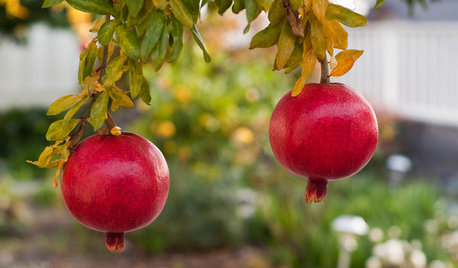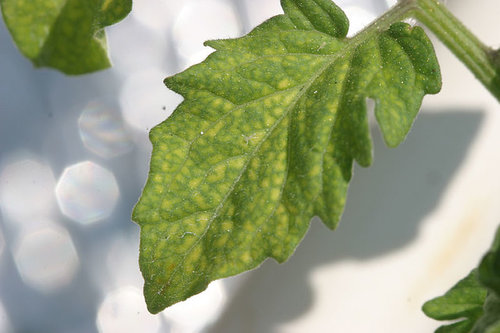Tomato Magnesium Deficiency
bbrush
13 years ago
Related Stories

GARDENING GUIDESWhat's Wrong With My Plant? Leaves Often Hold the Clues
Learn how to identify common plant ailments by reading their leaves
Full Story
FARM YOUR YARDHow to Farm Your Parking Strip
Get an up-close look at a thriving street-side edible garden, one of many sprouting up in Seattle
Full Story
EDIBLE GARDENSGarden BFFs? Why Your Vegetables Are Begging for Companion Plants
Foster friendships among plants for protection from pests, pollination support and color camaraderie
Full Story
GARDENING GUIDESNorthern California Gardener's October Checklist
It's still a great time to plant flowers, vegetables and even bulbs in California gardens this month, thanks to predictably mild weather
Full Story
FRONT YARD IDEAS10 Ideas for a Front-Yard Edible Garden Your Neighbors Will Love
Choosing attractive, well-mannered plants and sharing the bounty will go a long way toward keeping the peace
Full Story
FARM YOUR YARDHow to Grow Vegetables in Containers
Get glorious vegetables and fruits on your patio with a pro’s guidance — including his personal recipe for potting mix
Full Story
LIFE12 Effective Strategies to Help You Sleep
End the nightmare of tossing and turning at bedtime with these tips for letting go and drifting off
Full Story
LANDSCAPE DESIGNNatural Swimming Pools: More Beauty, No Chemicals
Keep your skin and the environment healthy with a pool that cleans itself, naturally
Full Story
GARDENING GUIDESHow to Plan Your Edible Garden
Get organized before you plant to ensure that your fruits and vegetables have a chance to thrive
Full Story
GARDENING GUIDESPacific Northwest Gardener: What to Do in June
Now's the time to prune pines and vines, prevent pests and buy June-blooming plants to keep your garden healthy and beautiful
Full Story






lucas_formulas
bbrushOriginal Author
Related Professionals
Ashland Landscape Architects & Landscape Designers · Saint Charles Landscape Architects & Landscape Designers · Canton Landscape Contractors · Stoughton Landscape Contractors · Addison Landscape Contractors · Bethel Park Landscape Contractors · Edinburg Landscape Contractors · Hampton Bays Landscape Contractors · Lakeville Landscape Contractors · Lemay Landscape Contractors · San Rafael Landscape Contractors · The Villages Landscape Contractors · Watertown Landscape Contractors · Wheat Ridge Landscape Contractors · Shafter Landscape Contractorslucas_formulas
danielfp
bbrushOriginal Author
bbrushOriginal Author
lucas_formulas
lucas_formulas
danielfp
lucas_formulas
lucas_formulas
danielfp
ethnobotany
danielfp
ethnobotany
lucas_formulas